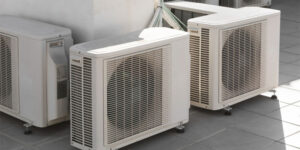The Essential HVAC Parts Checklist Every Maintenance Team Should Know
In commercial and industrial settings, HVAC systems are the backbone of environmental comfort and equipment reliability. These systems regulate temperature, control air quality, and maintain safe operating conditions in large facilities. But even the most robust system can falter without proper maintenance, and a big part of effective maintenance is knowing which HVAC parts are critical to monitor, repair, or replace.
For maintenance teams, understanding the essential HVAC parts is not just about knowing names; it’s about recognizing what each component does, when it tends to fail, and how to ensure it’s operating at peak performance. A well-informed team minimizes downtime, increases energy efficiency, and prolongs the life of the entire system.
At Alliance Comfort Systems, Inc., we specialize in providing commercial and industrial-grade HVAC parts tailored for large-scale applications. From our headquarters at 7200 Distribution Dr, Louisville, KY 40258, our experienced team supports businesses with the parts, guidance, and support needed to keep operations running without disruption.
This guide provides a comprehensive checklist of vital HVAC parts every maintenance team should know, monitor, and stock. Use it as your go-to reference to improve your preventive maintenance program and reduce unexpected system failures.
Why Knowing Your HVAC Parts Matters
Maintenance success starts with knowledge.
For commercial and industrial maintenance teams, a simple lack of awareness can lead to unnecessary system breakdowns. Knowing which HVAC parts are prone to failure, which require routine inspection, and which should be kept in stock can streamline your response time when something goes wrong.
With commercial HVAC systems being far more complex and larger in scale than residential systems, the list of essential parts can be long. That’s why this checklist focuses on high-priority components that tend to wear out, impact energy efficiency, or create major issues when they malfunction.
Benefits of a well-maintained HVAC parts inventory:
- Quicker repairs during emergencies
- Lower costs due to bulk or preemptive purchases
- Reduced system downtime
- More accurate maintenance scheduling
Air Filters: The First Line of Defense
Clean air starts here.
Air filters may seem basic, but in commercial and industrial settings, their role is far from minor. They trap dust, debris, and contaminants, preventing them from entering sensitive system components.
Dirty or clogged filters restrict airflow, reduce efficiency, and increase energy costs. In industrial environments with higher particulate concentrations, filters should be inspected frequently and changed monthly or as required.
Types of filters to keep in stock:
- Pleated filters for higher dust retention
- HEPA filters for cleanroom environments
- Electrostatic filters for enhanced reusability
Belts and Pulleys: The Silent Workhorses
Worn belts are a warning sign.
Belts connect motors to fans and blowers. When belts become loose or worn, they can slip, create noise, or fail completely, leading to airflow loss. Pulleys must also be checked for wear and alignment.
Common maintenance oversight involves improper belt tensioning or using mismatched replacements. Stocking the right belts, checking alignment, and inspecting pulleys regularly will ensure consistent performance.
Watch for:
- Cracking or fraying belts
- Unusual vibration or noise
- Uneven pulley wear
Blower Motors and Fan Assemblies
Without air movement, HVAC fails.
The blower motor and fan assembly push conditioned air through ductwork. If the motor fails or the fan is obstructed, you’ll notice a sharp drop in performance. These components are mission-critical in large commercial systems where consistent air delivery is required.
Ensure motors are lubricated, fans are balanced, and bearings are functioning correctly. In high-usage environments, it’s wise to keep at least one spare motor and fan assembly.
Contactors, Relays, and Capacitors
Electrical control components fail quietly—but critically.
These components help start compressors, blowers, and fans. Over time, contactors and relays can pit or corrode, while capacitors lose charge. If any of these fail, it can prevent the entire HVAC system from turning on or functioning properly.
For maintenance teams, it’s essential to carry spares of:
- Start and run capacitors
- Magnetic contactors
- Control relays
Routine inspections can help detect wear early. Replace aging capacitors proactively to avoid compressor damage due to hard starts.
Compressors: The Heart of the Cooling System
When the compressor fails, cooling stops.
Compressors pump refrigerant through the system. These are among the most expensive HVAC parts, and failure typically means either replacement or major repair. Noise, overheating, or short-cycling are signs of an impending problem.
Because compressors are so integral and costly, preventive maintenance is vital. Monitor oil levels, check for vibration, and keep the system clean and leak-free.
Keep in mind that using incorrect compressor replacements or running a compressor with a failing capacitor can lead to expensive consequences.
Coils: Evaporator and Condenser
Clean coils equal efficient heat exchange.
The evaporator coil absorbs heat, and the condenser coil releases it. Dirty coils reduce heat exchange efficiency, leading to higher operating costs and reduced cooling capacity. Industrial environments can be particularly hard on coils due to airborne debris or chemical exposure.
Maintenance teams should:
-
Regularly clean coils with approved solutions
-
Inspect fins for damage
-
Check for refrigerant leaks
Refrigerant and Leak Detectors
Leaks are invisible but costly.
Refrigerant is essential to the cooling process, and leaks not only degrade performance but can also lead to system failure. Environmental regulations also require timely leak detection and repair.
Maintenance teams should have access to:
- Refrigerant stock matching their system
- Leak detection tools (electronic and dye-based)
- Pressure gauges and recovery tools
Keeping the right type of refrigerant and proper tools ensures fast, compliant repair work.
Thermostats and Control Boards
Smart control starts with reliable components.
While thermostats and control boards may seem low-risk, a malfunction can mislead diagnostics or shut the system down entirely. In large commercial systems, these devices are networked and often part of a Building Management System (BMS).
Common failure indicators include:
-
Intermittent system startup
-
False temperature readings
-
Loss of communication with system components
Keep backups of programmable thermostats, circuit boards, and control interfaces, especially for older systems where part availability may be limited.
Drain Pans and Drain Lines
Water damage is preventable.
Condensation from evaporator coils is routed into drain pans and lines. If blocked or cracked, they can overflow, causing water damage, mold growth, and system failure.
Regular flushing of drain lines, inspecting for clogs, and replacing cracked pans are essential tasks for any maintenance crew.
Sensors and Pressure Switches
System protection starts with early warning.
Pressure sensors, temperature sensors, and high/low-pressure switches monitor system conditions and protect against unsafe operation. Failure can lead to poor diagnostics or safety risks.
These HVAC parts are small but critical. Every maintenance checklist should include sensor calibration and switch testing. Keeping spares ensures rapid replacement when faults occur.
Fuses and Breakers
Don’t overlook the obvious.
A tripped breaker or blown fuse can be the first sign of a deeper electrical problem. Always replace with the correct type and rating. Keeping a variety of HVAC-rated fuses and breakers on hand is essential for fast repairs.
Vibration Isolators and Mounts
Comfort and longevity depend on stability.
Vibration not only creates noise but can loosen fasteners, misalign components, and wear out internal parts faster. Mounts, isolators, and grommets should be inspected and replaced when cracking or hardening is evident.
Especially in rooftop units or near-sensitive equipment, vibration-damping is essential.
Building a Proactive HVAC Parts Strategy
Inventory is part of preparedness.
For commercial and industrial teams, not having the right HVAC parts on hand when a system fails can cost tens of thousands in downtime. That’s why building a proactive parts inventory is a smart investment.
Tips for creating your checklist:
- Audit all HVAC equipment for model numbers and parts lists
- Identify high-failure or high-use items
- Establish reorder points and set par levels
- Review seasonal maintenance trends
Partnering With the Right Supplier
At Alliance Comfort Systems, Inc., we offer more than just parts. We provide expertise, reliability, and speed for commercial and industrial customers who can’t afford to guess when it comes to HVAC performance.
From our Louisville location at 7200 Distribution Dr, Louisville, KY 40258, we help facility managers, maintenance crews, and building engineers stay stocked, stay informed, and stay in control.
When you call +1 502 384 8500 or email ACS.receptionist@AllianceComfortSys.com, you’re connecting with professionals who understand your needs and provide trusted solutions.
Final Thoughts: Take Control with the Right HVAC Parts
Whether you manage a manufacturing plant, warehouse, hospital, or data center, your HVAC system is a critical utility. Having the right HVAC parts readily available can be the difference between a minor hiccup and a catastrophic failure.
Use this checklist to evaluate your current maintenance practices, identify gaps in your parts inventory, and work with trusted suppliers like Alliance Comfort Systems, Inc. to ensure your systems are always running at full capacity.
With the right knowledge, preparation, and partnership, your maintenance team can reduce downtime, save money, and maintain comfort and performance across every season.
Contact Us
Alliance Comfort Systems, Inc.
📍 7200 Distribution Dr, Louisville, KY 40258
📞 Toll-Free: +1 502 384 8500
📧 Email: ACS.receptionist@AllianceComfortSys.com
We’re ready to supply all your commercial and industrial HVAC parts—with speed, precision, and unmatched expertise.
HVAC Parts Demystified: What They Are and Why They Matter
When you walk into a climate-controlled warehouse, hospital, data center, or manufacturing facility, you’re witnessing the hidden work of a complex, finely tuned system known as HVAC—Heating, Ventilation, and Air Conditioning. These systems aren’t just cooling a room or warming a hallway. They are controlling humidity, maintaining air quality, supporting critical operations, and keeping equipment and personnel safe and productive.
But what makes these systems work so seamlessly in commercial and industrial environments? The answer lies in the often overlooked heroes of facility management—HVAC parts. These individual components, when functioning correctly, create the harmony of temperature control and airflow we all rely on. Yet, when one fails, the entire system can grind to a halt.
At Alliance Comfort Systems, Inc., located at 7200 Distribution Dr, Louisville, KY 40258, we specialize in commercial and industrial HVAC systems, offering expert solutions and genuine HVAC parts to keep your business operating without a hitch. If you’re unsure about what HVAC parts actually do, how they function, and why they matter, this guide will break it down for you in practical, non-technical terms.
Have questions along the way? You can always call our experienced team at +1 502 384 8500 or email us at ACS.receptionist@AllianceComfortSys.com for personalized support.
Understanding the Role of HVAC Parts
Every HVAC system is a puzzle of components.
Whether it’s for a large-scale food processing facility or a multi-level office complex, an HVAC system is made up of numerous parts, each performing a specific task. While they may vary slightly depending on system type or configuration, the core components remain fairly consistent.
If even one HVAC part isn’t functioning properly, the performance of the entire system can degrade, causing anything from reduced efficiency to a total breakdown.
In commercial and industrial settings, this can mean:
- Downtime that halts operations
- Unsafe environmental conditions
- Higher energy consumption and costs
Knowing what these parts are—and what they do—is key to better maintenance, smarter repairs, and longer system lifespans.
Blowers and Fans: The Wind Beneath the System
These components keep air moving.
Blowers and fans are essential HVAC parts that distribute air throughout the system. Without them, there’s no airflow. They push conditioned air through ducts and ensure it reaches every corner of your facility.
Commercial systems use high-capacity blowers that must handle long duct runs and varying air volumes. Fan motors, blades, housings, and bearings all must be checked regularly. A failing blower leads to uneven temperatures and poor air circulation.
Air Filters: More Than Just Dust Catchers
Protecting both the system and the occupants.
Air filters do more than trap dust. In industrial settings, they guard against pollutants, chemicals, and particles that can damage machinery and endanger employees. They also prevent these substances from clogging other sensitive HVAC parts like coils and dampers.
Replacing air filters regularly helps maintain system efficiency and indoor air quality. It’s a small step with a big impact on safety and performance.
Thermostats and Sensors: The Brain of the Operation
Control starts with detection.
Thermostats and sensors monitor temperature, humidity, and pressure. They communicate with the control board to tell the system what to do. When these HVAC parts fail, your system may run constantly, shut down unexpectedly, or operate inefficiently.
Advanced systems rely on dozens of sensors to fine-tune performance. In data centers or critical environments, sensor accuracy is vital to prevent overheating or overcooling.
Control Boards and Modules: The System’s Command Center
Electronics that tie everything together.
HVAC control boards process sensor inputs and determine the operation of fans, compressors, and valves. If the board fails, your entire system can become unresponsive. These HVAC parts are programmed specifically for the model they serve, so replacements must be exact matches.
Commercial control boards often integrate with building management systems (BMS) and allow remote diagnostics, scheduling, and optimization.
Compressors: The Power Behind the Cooling
The engine of the air-conditioning cycle.
Compressors pressurize refrigerant and move it through the coils to absorb and release heat. These are high-value HVAC parts and are subject to wear due to their mechanical and thermal loads.
In large-scale facilities, a failed compressor means an entire area can lose cooling. This can be catastrophic in food storage, healthcare, or electronics manufacturing. Keeping the compressor clean, lubricated, and protected from electrical surges is vital.
Coils: Where Heat Is Exchanged
Without them, there’s no heating or cooling.
Evaporator and condenser coils are where the refrigerant absorbs and dissipates heat. These HVAC parts must remain clean and unobstructed for efficient operation. Dirty or damaged coils can lead to higher energy bills and decreased capacity.
Routine cleaning with coil-safe chemicals is a must, especially in dusty or high-pollution environments.
Valves and Dampers: Flow Control Champions
They regulate the path and volume of air and refrigerant.
Expansion valves, solenoid valves, and dampers help control the flow of fluids and air inside an HVAC system. Malfunctioning valves can cause overheating, freezing, or inefficiency. Actuators that control these valves can also fail and should be tested during maintenance checks.
These HVAC parts are small but critical. A single faulty valve can sabotage an otherwise healthy system.
Capacitors and Contactors: Electric Power Managers
Small components, huge impact.
Capacitors provide the burst of energy needed to start motors. Contactors control the flow of electricity to motors and compressors. When these HVAC parts go bad, motors may not start or may overheat.
Regular inspection for bulging capacitors or burnt contactor points can prevent sudden shutdowns. Having spares on hand reduces response time during repairs.
Refrigerant: The Lifeblood of Cooling
Not technically a part, but still essential.
Refrigerants are chemicals used to absorb and release heat. A system that leaks refrigerant won’t cool properly. Leak detectors and gauges are essential tools for detecting leaks and charging the system.
Remember: refrigerant types vary. Always match the refrigerant to your system specifications.
Drain Lines and Pans: Preventing Water Damage
Don’t let condensation become a disaster.
Drain pans catch moisture removed from the air. If blocked or cracked, these can overflow and cause water damage or mold growth. Drain lines should be flushed regularly, and pans inspected for corrosion or clogging.
In commercial buildings, even a small leak can cause extensive damage if left unchecked.
Belts and Bearings: Quietly Doing the Heavy Lifting
Simple parts that often cause big problems when they fail.
Belts connect motors to fans and blowers. Bearings support rotating shafts and reduce friction. If belts slip or bearings wear out, they can cause noise, vibration, and component damage.
These HVAC parts wear out gradually and should be replaced during preventive maintenance. Regular tension checks and lubrication extend their lifespan.
Fuses and Breakers: The System’s Safety Net
Preventing overloads and electrical fires.
These are often overlooked but are critical in protecting your system from power surges and overloads. Always replace with the correct amperage to avoid fire hazards or damage to other parts.
Vibration Isolators: Protection Through Stability
Unstable equipment leads to expensive repairs.
Vibration isolators reduce the impact of motor and compressor movement. They protect other HVAC parts from excess wear and prevent structural damage to your building. Especially in rooftop units or large-scale installations, these should be inspected often.
Commonly Overlooked HVAC Parts
Small components can create big problems.
Even seasoned technicians can forget about some components during inspections. Here are a few you should never ignore:
- Gaskets and seals (to prevent refrigerant leaks)
- Thermistors (used in temperature sensing)
- Wiring harnesses (often degraded by heat and vibration)
Why Stocking Genuine HVAC Parts Matters
You can’t afford to experiment with generic or incompatible components.
Using off-brand or mismatched parts can reduce system efficiency, increase energy costs, and void manufacturer warranties. In industrial environments, the margin for error is slim. That’s why Alliance Comfort Systems, Inc. provides only genuine, high-quality HVAC parts tailored for your commercial application.
Benefits of using genuine parts:
- Consistent performance
- Longer equipment life
- Manufacturer compliance
A Preventive Approach to HVAC Parts
Don’t wait for a failure to find what’s missing.
If your maintenance strategy is reactive, you’re already losing time and money. Instead, develop a preventive parts program. Audit your system, track the condition of each part, and maintain an inventory of critical spares.
This ensures that when a part fails, your team is ready, not scrambling.
Start by:
- Identifying parts with high failure rates
- Creating a monthly inspection schedule
- Keeping spares for mission-critical components
Partnering With Alliance Comfort Systems, Inc.
When it comes to sourcing reliable, high-performance HVAC parts, trust the experts at Alliance Comfort Systems, Inc. We focus exclusively on commercial and industrial applications, delivering unmatched support and quality from our headquarters at 7200 Distribution Dr, Louisville, KY 40258.
Whether you need help identifying the right parts, building your inventory, or troubleshooting a system issue, our experienced team is ready to assist.
📞 Toll-Free: +1 502 384 8500
📧 Email: ACS.receptionist@AllianceComfortSys.com
We don’t just sell parts—we provide peace of mind.
Final Thoughts: Empower Your Team With HVAC Knowledge
Understanding the value and function of HVAC parts transforms your maintenance approach from reactive to proactive. It reduces downtime, extends system life, and saves money over the long term. Your team will work more efficiently, respond faster to emergencies, and keep your facility comfortable and compliant year-round.
Take the first step today by reaching out to Alliance Comfort Systems, Inc., and let us help you build a powerful maintenance strategy backed by the right parts and expert advice.
Address
7200 Distribution Dr, Louisville, KY 40258Phone: (502) 384-8500 Email: ACS.receptionist@AllianceComfortSys.com
Opening Hours
| Monday | 9:00 a.m. – 5:00 p.m. |
| Tuesday | 9:00 a.m. – 5:00 p.m. |
| Wednesday | 9:00 a.m. – 5:00 p.m. |
| Thursday | 9:00 a.m. – 5:00 p.m. |
| Friday | 9:00 a.m. – 5:00 p.m. |
| Saturday | Closed |
| Sunday | Closed |











